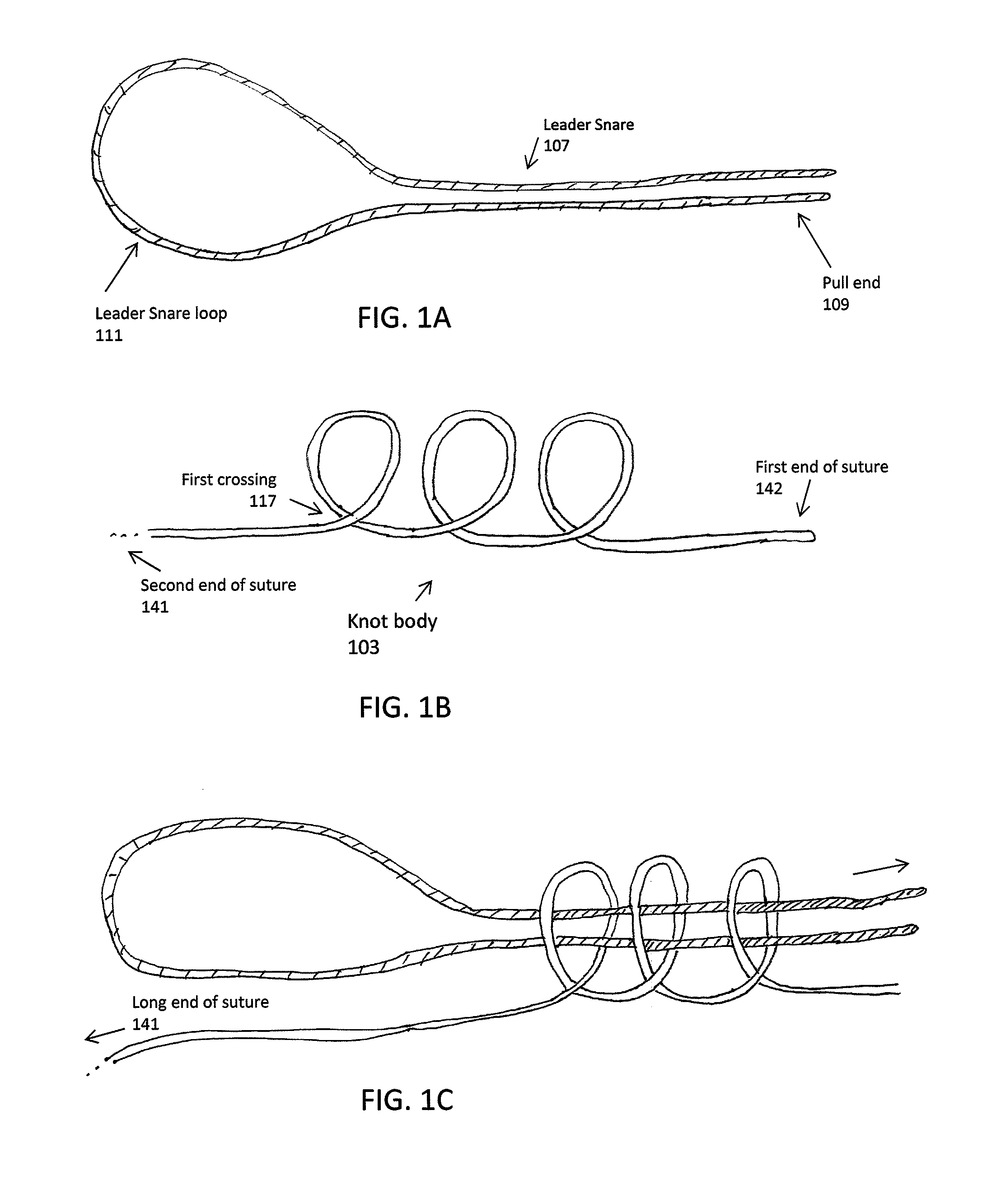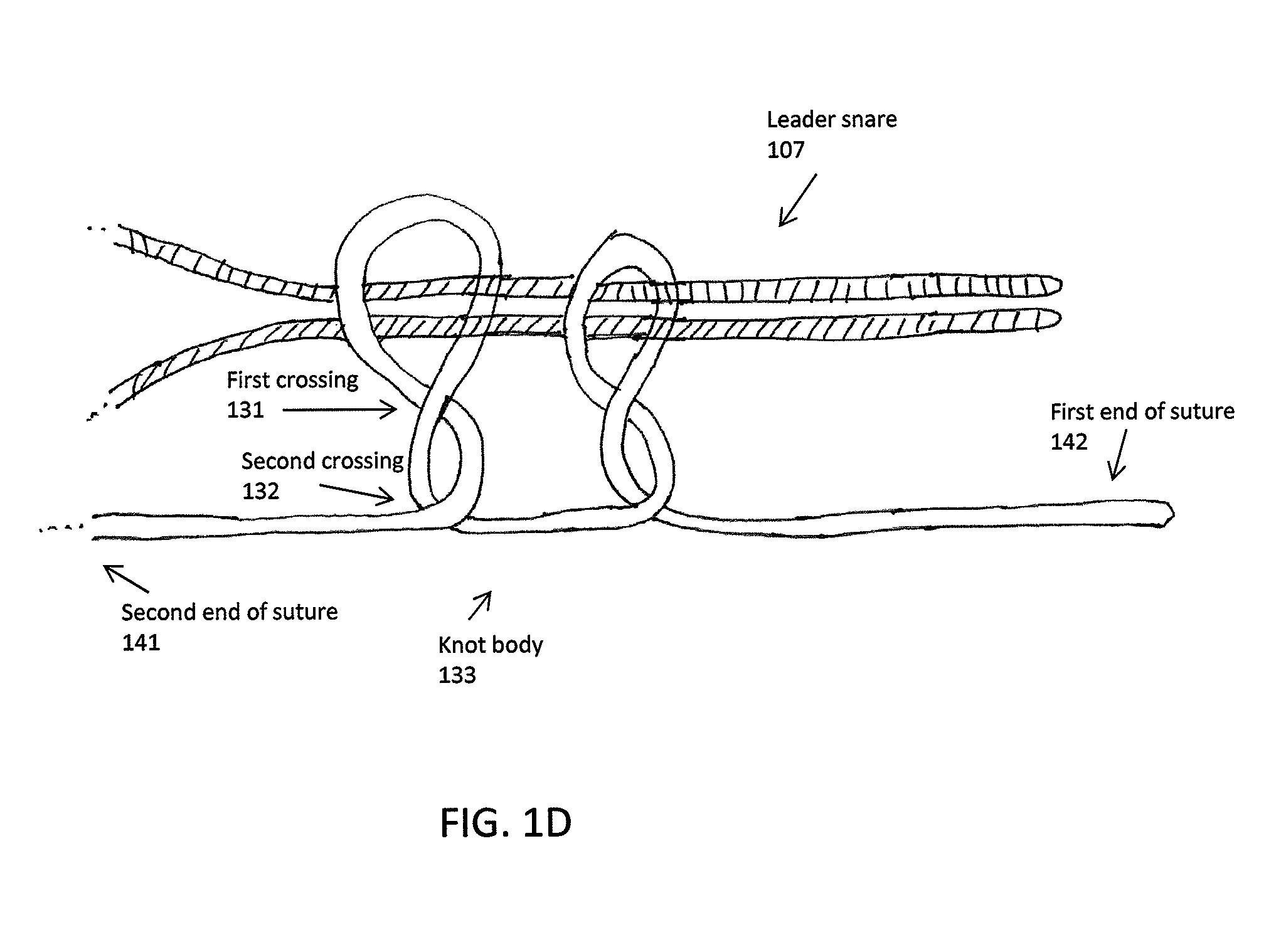Pre-tied surgical knots for use with suture passers
a surgical knot and pre-tied technology, applied in the field of suture techniques, can solve the problems of undesirable access to tissue in this manner, time-consuming suturing of tissue during surgical procedures, and difficulty, and achieve the effect of reducing the size of the loop and reducing the size (e.g
- Summary
- Abstract
- Description
- Claims
- Application Information
AI Technical Summary
Benefits of technology
Problems solved by technology
Method used
Image
Examples
Embodiment Construction
[0052]Described herein are sutures with pre-tied suture knots that are compatible for use in minimally invasive surgical techniques using a suture passer. The structure of different types of pre-tied knots are described herein, including variations that may result in different knots, variations formed of the suture material themselves, and variations formed of different material(s) that may be connected to the suture. In addition, methods of forming, placing and tying pre-tied knots are also described. Finally, examples of the use of a pre-tied knot to repair, anchor and otherwise fix tissue or tissue and implants (e.g., explants, implantable medical devices, and the like) are also provided herein.
[0053]As used herein in the specification and claims, including as used in the examples and unless otherwise expressly specified, all numbers may be read as if prefaced by the word “about” or “approximately,” even if the term does not expressly appear. The phrase “about” or “approximately”...
PUM
 Login to View More
Login to View More Abstract
Description
Claims
Application Information
 Login to View More
Login to View More - R&D
- Intellectual Property
- Life Sciences
- Materials
- Tech Scout
- Unparalleled Data Quality
- Higher Quality Content
- 60% Fewer Hallucinations
Browse by: Latest US Patents, China's latest patents, Technical Efficacy Thesaurus, Application Domain, Technology Topic, Popular Technical Reports.
© 2025 PatSnap. All rights reserved.Legal|Privacy policy|Modern Slavery Act Transparency Statement|Sitemap|About US| Contact US: help@patsnap.com



